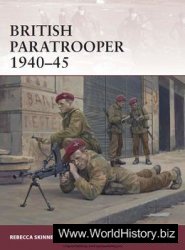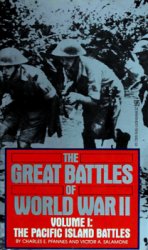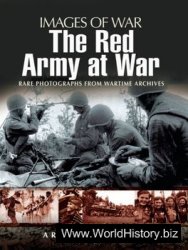Across the generations, the Yokib polity’s rulers dedicated stelae that emulated and recalled the forms, compositions, themes, motifs, costume elements, and serialization of their predecessors’ stelae. Monuments’ physical placements and orientations were also crucial. The continued emulation of the forms of older sculptures and the orientation toward them indicate that they remained relevant and even powerful. They commemorated time’s passage and became historical objects that embodied the past but endured and engaged with newer sculptures and people.
At the same time, their forms and physical placements functioned as material expressions that conveyed continuity as well as distinction across generations. Their pictorial references and physical interrelations conveyed continuity, and their clustering in various locations throughout the site center marked their differences. Their materiality—with or without their texts—thus expressed both sameness and difference, which allowed even those who could not read texts access to these notions.
The stelae were loci for worship of revered ancestors, but they also may have been sites for the retelling and reframing of the past in relation to the present. As suggested in this chapter, processions connecting the monuments could have activated the historical dialogues within texts and images and across sculptures, buildings, and architectural groups. And by experiencing them in series, people could expand or even reshape their recorded temporal and historical narratives, comparable to the reframing of history in Structure O-13’s Panels 2 and 3 and Stela 12.
At times, the stela placements formed tableaux of enlivened, communicating sculptural embodiments of rulers, alive and deceased, allowing interaction of monuments in each other’s y-ichnal. In other cases, the monuments faced not other monuments but processional pathways connecting them, requiring and encouraging people to travel among them and across the site. There came to be an unobstructed north-south pathway between the East and South Groups and an east-west pathway between the East and West Groups comprising a series of terraces and monumental stairways (fig. 3.23). These may have been used for processions and performances among the architectural groups, funerary pyramids, and sets of monuments. Such performances could have activated the connections among the generations of rulers and the buildings and monuments that embodied them.
Furthermore, with the elaboration of O-13 as a place for sculptural dedication and ceremonial performance in the mid - and late-eighth century, this pyramid could have been integrated into already existing—although modified—processional pathways. In fact, the sculptures of Rulers 5, 6, and 7 on Structure O-13 responded to and recalled the sculptures of their predecessors. Moreover, they were oriented toward the South Group and the polity’s earliest stelae.
During K’inich Yat Ahk II’s reign in the late eighth century, the pathway between the East and South Groups likely channeled processions commemorating ancestors buried in the South Group and embodied in its sculptures. Processions also may have celebrated the repeating cycles of time and history. Although part of the South Group may have been in ruins (Escobedo and Zamora 2001c:376-77; Houston, Escobedo, and Webster 2008), the area appears to have retained relevance and potency. In particular, the orientation of the O-13 sculptures toward the South Group, the processional path between them, and the strong visual connection between Stela 14 on Structure O-13 and Stelae 25 and 33 in the South Group are indications that the South Group remained relevant and important, particularly as a locus of early ancestors and their material remains.
The pathway between the East and West Groups may have linked the living to the dead as well, for the West Group contained ancestors’ funerary pyramids and sculptural embodiments. However, the Acropolis also was the royal palace, for during K’inich Yat Ahk Il’s reign, if not earlier, Structure J-6 in the Acropolis held the throne room and K’inich Yat Ahk II’s Throne 1 (see fig. I.11). During the reigns of Rulers 5, 6, and 7, processions could have gone from the royal palace and administrative quarters of the Acropolis to the O-13 shrine for monument dedications, celebrations of period endings, and offerings to ancestors. The spaces of the West and East Group Plazas were large and open and appropriate for dances or gatherings, and the wide pathways and stairways would have been ideal for processions.
Furthermore, the J-6 throne room was located near the burial place of K’inich Yo’nal Ahk II and essentially in between the dramatic line of period-ending stelae of K’inich Yo’nal Ahk II and Itzam K’an Ahk II, which flanked the monumental stairways of the Acropolis facade (fig. 3.28). K’inich Yat Ahk II—and probably his predecessors— thus reigned amid their ancestors’ monuments, which visually and physically framed the entrance to the Acropolis and the route to the throne room (Houston 2004:275). While holding court in his throne room or standing in a more public display on an Acropolis terrace or stairway, the ruler would have been framed by sculptures from the past. These ancestral embodiments may have been considered still active, witnessing and providing validation for the living ruler’s own body and image.
The Piedras Negras processional causeways are physical manifestations of the conceptual links among the architectural groups, and their forms may have guided ritual participants to move across them. Consequently, processions between and among these groups could have activated connections across the generations. These connections were inherent in the monuments, but people, whether through their sight, movement, or memory, also would have activated the links among the monuments. These imputed connections were enhanced, no doubt, by oral history and staged dramas. Moreover, the late eighth-century processional routes across the site also would have been integrated with the ascent and descent of pyramids.
In all of these contexts, what comes to the fore is the kinetic nature of the viewing and experience of these sculptures. On their own, sculptures may have enacted dialogues and participated in the commemoration of the cyclicality of time, but they also placed people amid them, both as witnesses and as agents who were guided by the sculptures’ visual and physical forms, materiality, and orientations to weave together their narratives.

Figure 3.28. Plan of Piedras Negras West Group, with locations of the stelae of K’inich Yo’nal Ahk II (Ruler 3) and Itzam K’an Ahk II (Ruler 4), the tomb of K’inich Yo’nal Ahk II (Ruler 3), and Throne 1 of K’inich Yat Ahk II (Ruler 7). Detail, Map of Piedras Negras. Drawing by David Stuart and Ian Graham, after Parris and Proskouriakoff, Corpus of Maya Hieroglyphic Inscriptions, vol. 9, pt. 1, Piedras Negras, reproduced courtesy of the President and Fellows of Harvard College. With modifications by author and Kevin Cain, INSIGHT.




 World History
World History









